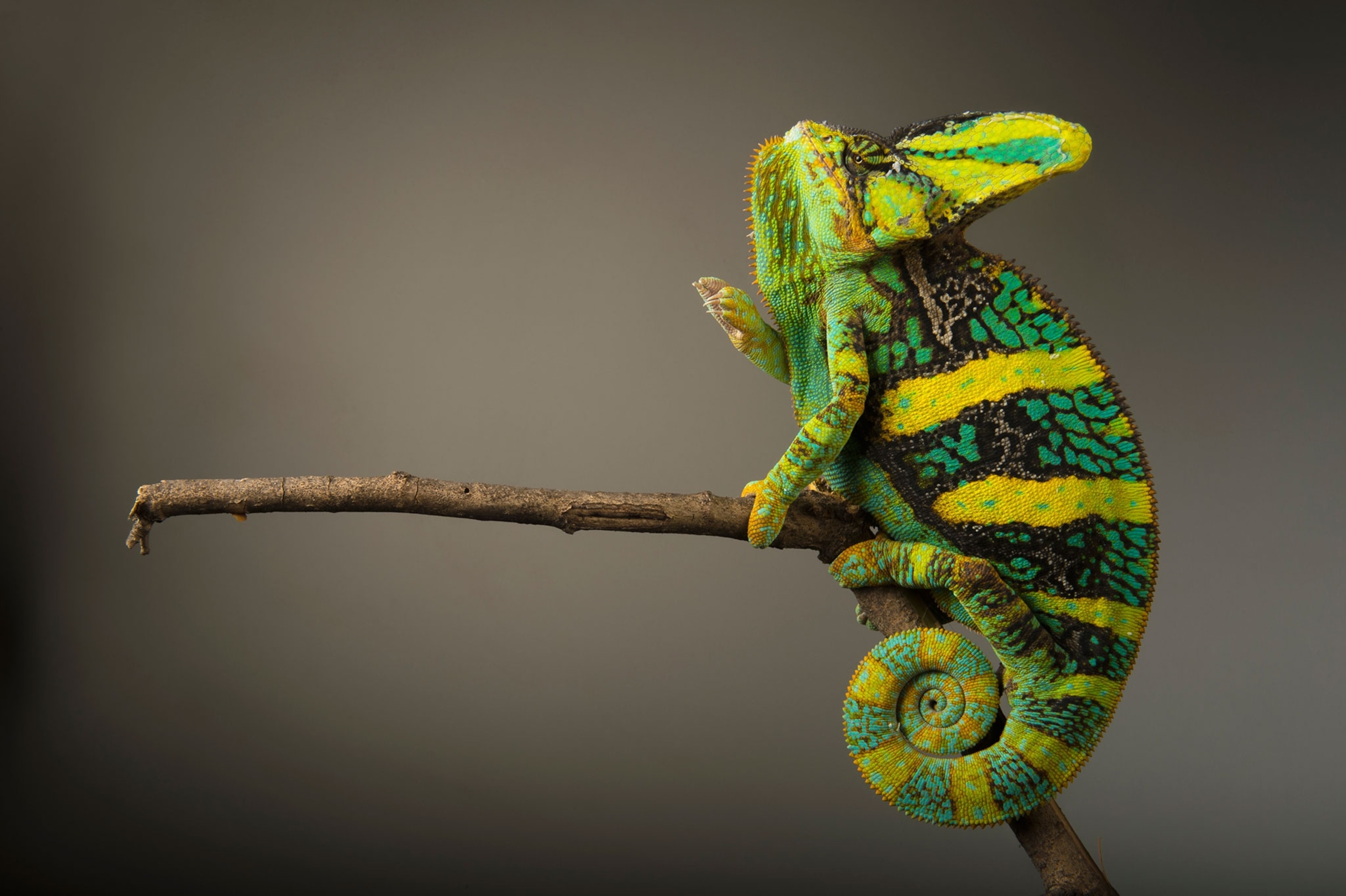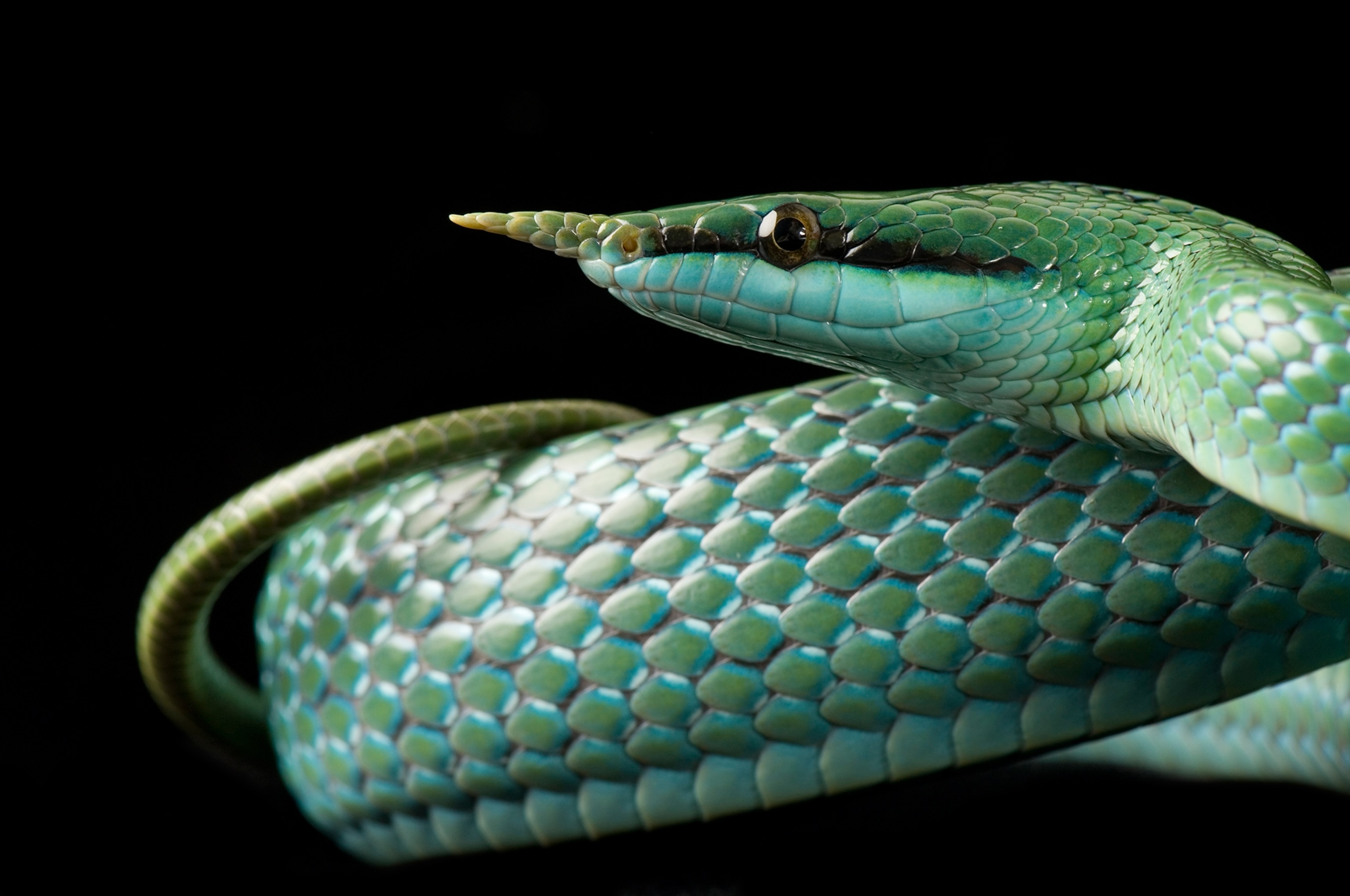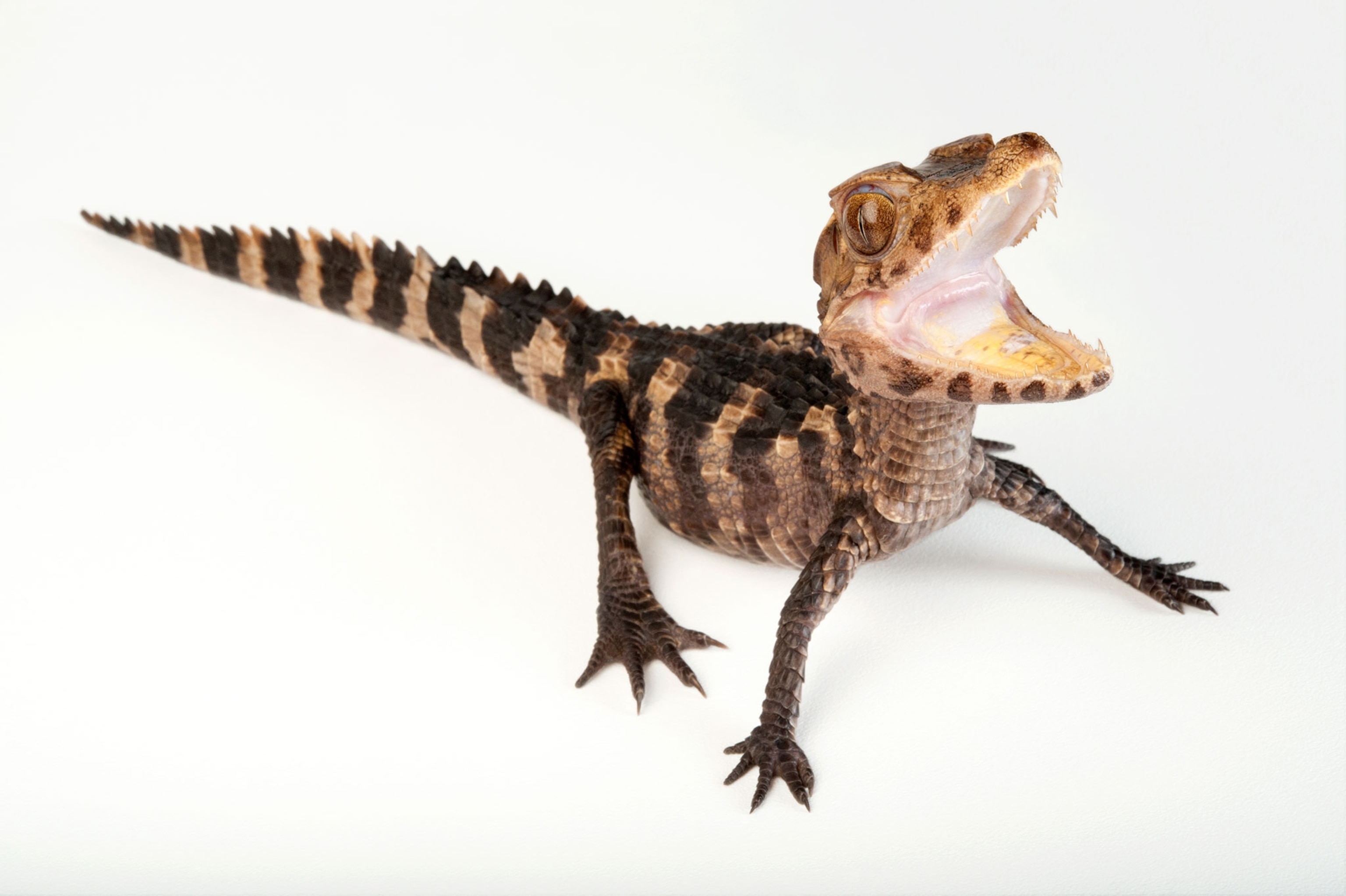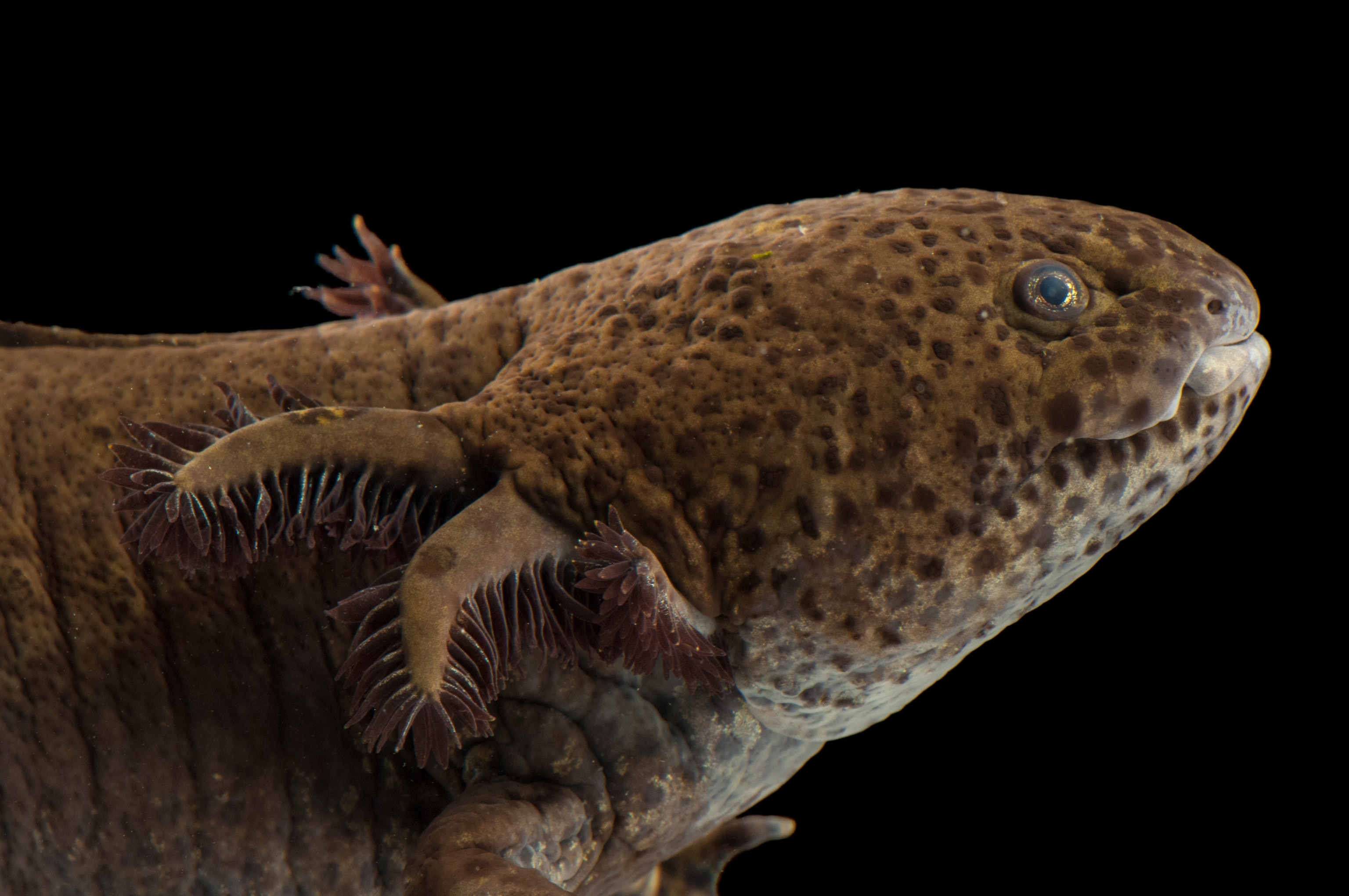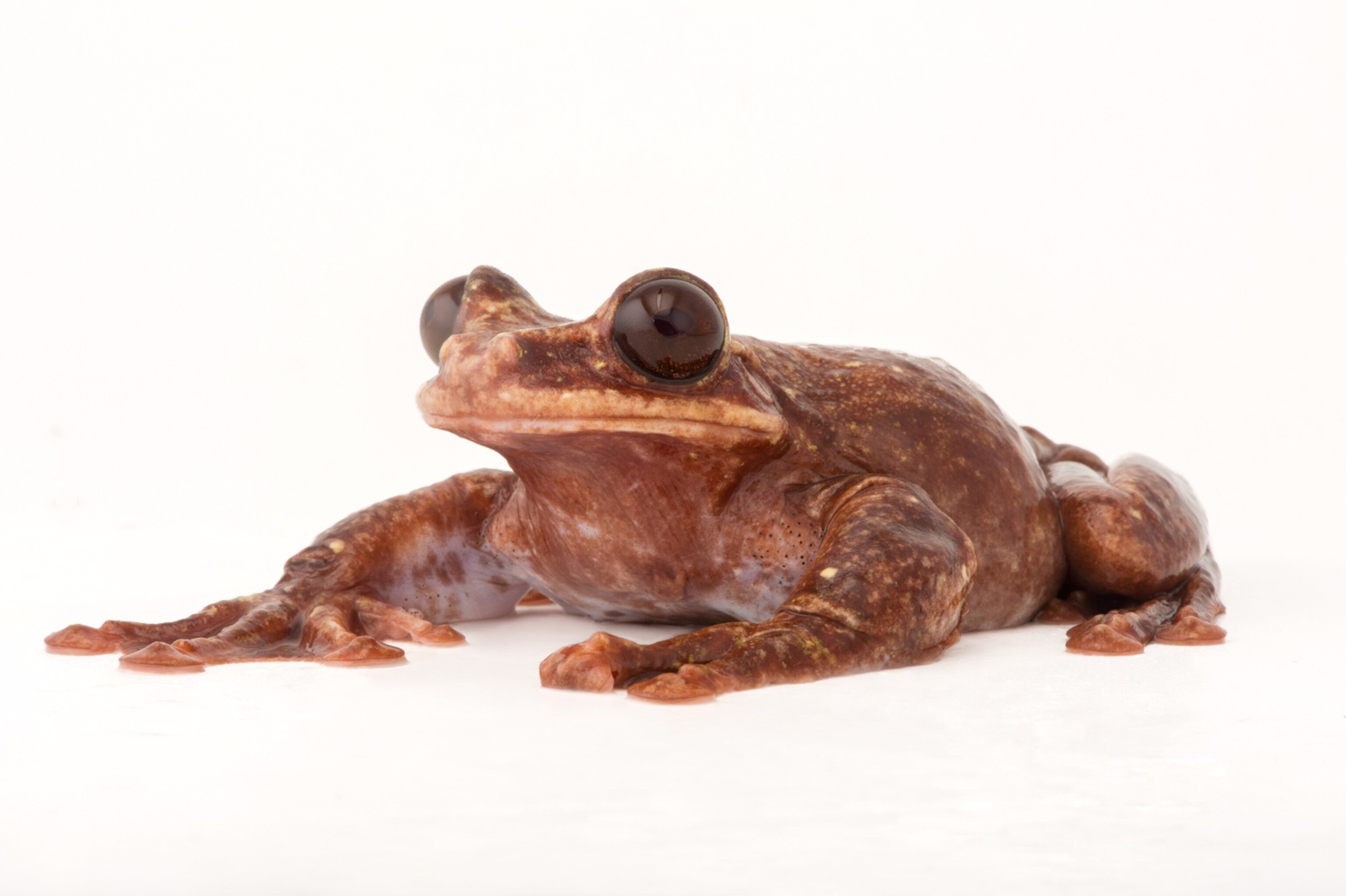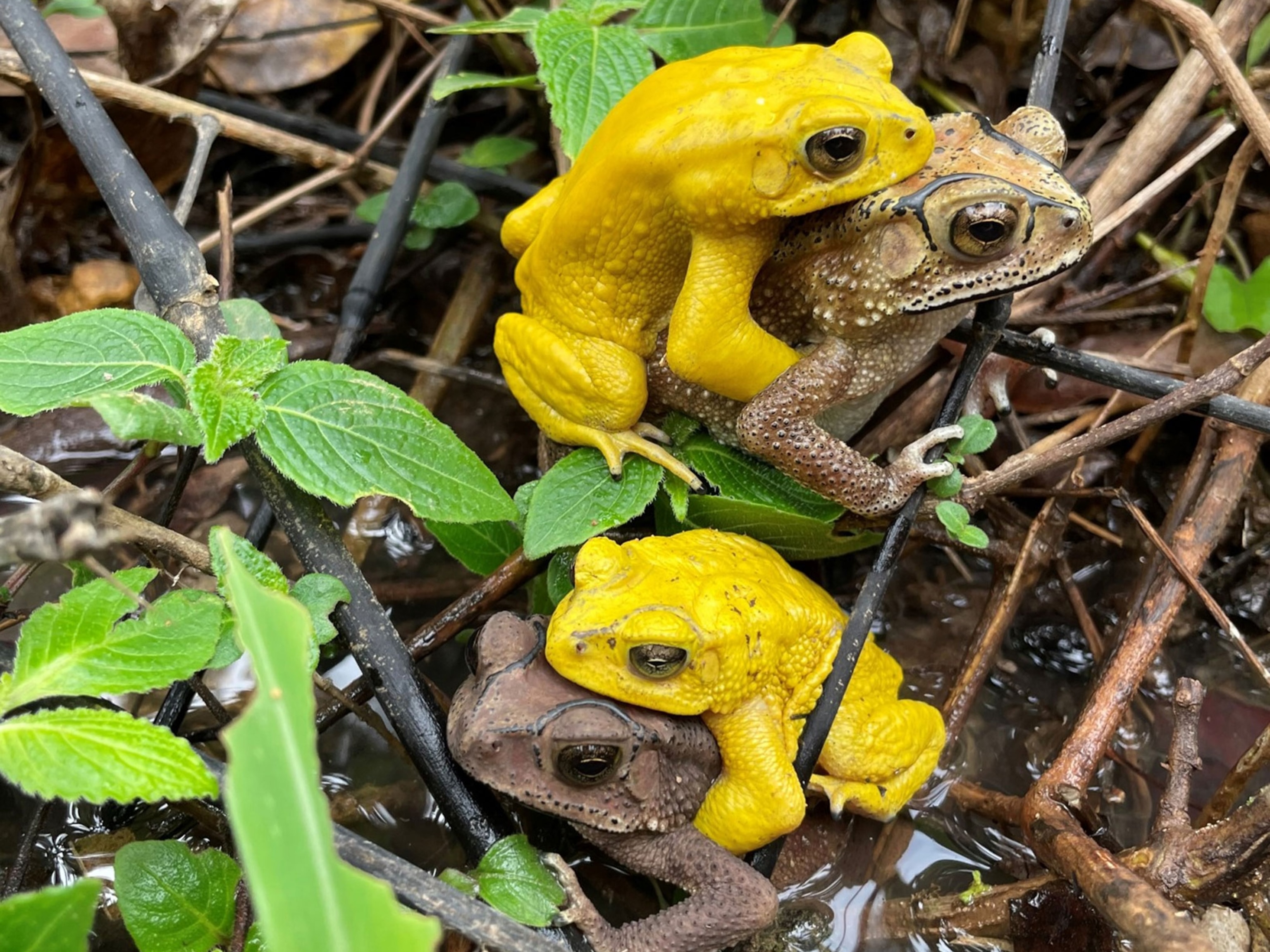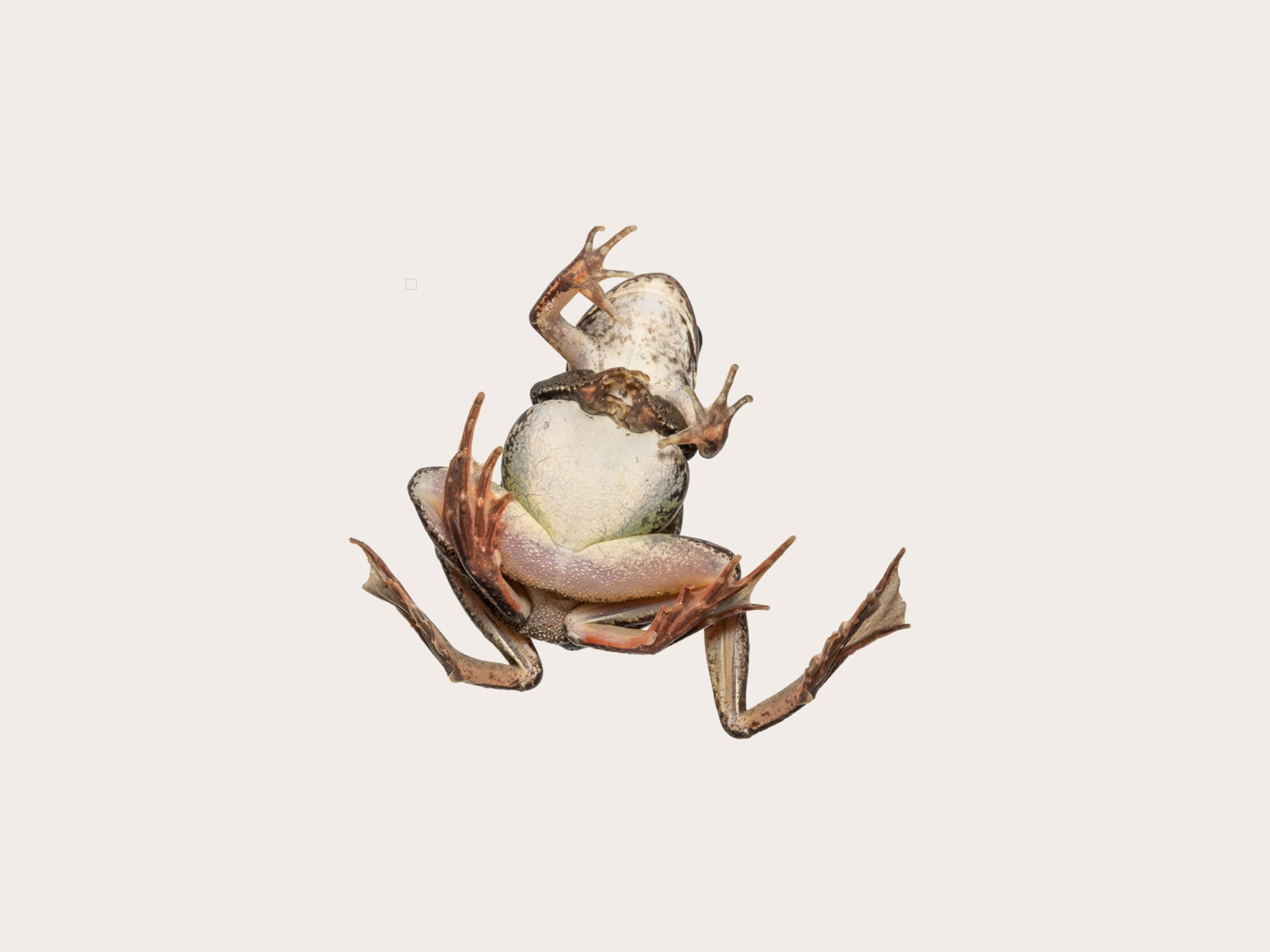
Meet Romeo, 'world’s loneliest frog,' and his new mate Juliet
New photographs reveal the critically endangered amphibians, which are native to a single stream in Bolivia.
Romeo, the frog formerly known as the world’s loneliest, has joined more than 9,000 other species in National Geographic’s Photo Ark, an effort to document every captive species on Earth before they go extinct.
So has his potential mate, Juliet, whose recent discovery in the wild has sparked a sliver of optimism that the critically endangered Sehuencas water frog can survive.
Photo Ark founder Joel Sartore, a National Geographic Explorer, took portraits of the orange-bellied amphibians at their home in Bolivia’s Museo de Historia Natural Alcide d’Orbigny on January 19.
Living only in one small stream within Bolivia’s Andean cloud forests, or yungas, Sehuencas water frogs (Telmatobius yuracare) have plummeted in number due to habitat loss, pollution, and climate change, among other threats.
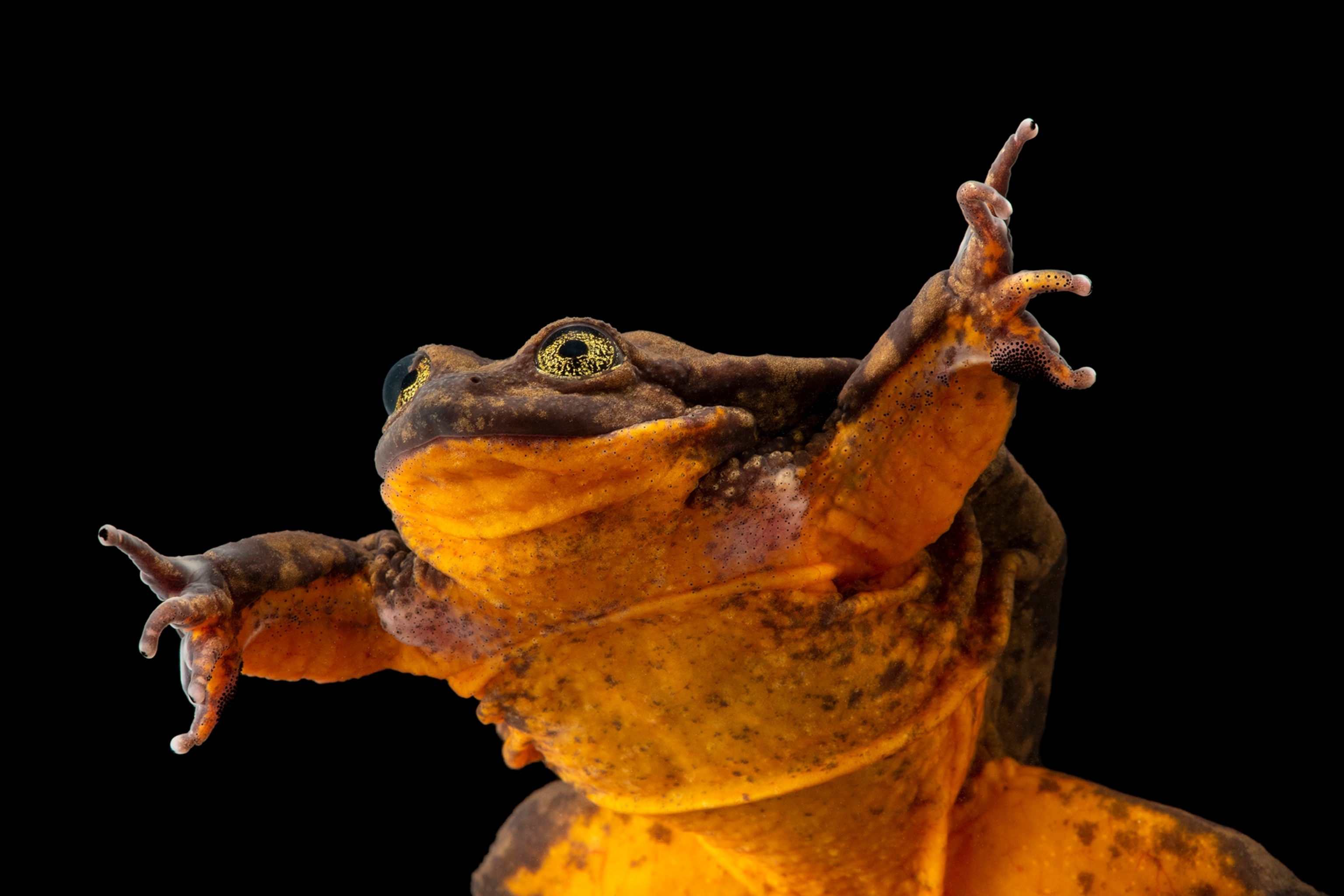
Collected from the wild a decade ago, Romeo is incredibly rare—until a few weeks ago, he was the last known specimen of his kind alive. (See more pictures of Romeo in the National Geographic book Vanishing: The World’s Most Vulnerable Animals, available for pre-order on Amazon.)
Because he’s so valuable, “to photograph Romeo, you have to go into a refrigerated trailer full of aquariums that's been outfitted as a clean room,” Sartore says by email. “This means you have to change into sterilized jumpsuits and boots, and that's just to see him.”
“Then there's the trick of photographing Romeo so that his personality shines through,” Sartore says. (Go behind the scenes of the Photo Ark.)
For instance, Sartore had to experiment with creative angles and positions using his camera to get Romeo and Juliet to make eye contact with the viewer—and thus feel more connected to them and their plight, he says.
“I figure if the public cares deeply about the fate of a frog, they'll care about everything else in the natural world as well,” Sartore says.
Finding Juliet
Romeo first made headlines in 2018 when the nonprofit Global Wildlife Conservation teamed up with the dating website Match.com to find a mate for the golden-eyed bachelor. (His romantic struggles are chronicled regularly on Twitter.)
The effort paid off: In January, Teresa Camacho Badani, the museum’s chief of herpetology, and colleagues discovered five Sehuencas water frogs, including Juliet, a juvenile female, and three males.
“I didn’t think I’d look for any frog with as much passion as I did on this expedition,” says Badani, who endured long days of rain, humidity, and rough terrain before she spotted the frogs in a stream on the final day of her trip.
Badani added she was driven by intense pressure to locate more specimens, knowing that Romeo was aging alone in the aquarium.
The new frogs are all in quarantine, where they’re being monitored for chytrid disease, a deadly fungus wiping out amphibians worldwide. “We do not want Romeo to get sick on his first date!” Badani quipped in an interview with Global Wildlife Conservation.
Challenging road ahead
Joking aside, true love isn’t a given—no one has ever bred these frogs in captivity, and it’s unknown whether Romeo and Juliet will even share a spark.
“Of course, we have a long, challenging road ahead of us,” Badani says—but she adds she’s optimistic.
See More Amazing Amphibians and Reptiles in the Photo Ark
For one, Romeo has shown physical signs he’s ready to mate, and the aquarium has a good track record of breeding a related endangered species, the Titicaca water frog. It’s also possible future expeditions could find more frogs, though Badani notes they’re clearly very rare. The earliest generation that could be reintroduced into the wild would be Romeo and Juliet’s grandchildren.
Christopher Jordan, Global Wildlife Conservation's Central America and tropical Andes coordinator, cautions that getting frogs to mate isn’t where the responsibility ends—their habitat needs attention, too. (Read about vanishing amphibians in National Geographic magazine.)
A massive hydroelectric project is underway in the Bolivian yungas, and large tracts of the region have already been deforested.
“We need to get in there and start working with local communities to help them protect these beautiful cloud forests and protect livelihoods,” according to Jordan, who is also a National Geographic Explorer.
Romeo also isn’t alone in that 15 related frogs in the Telmatobius genus are imperiled, Badani adds.
“Romeo’s species is an example,” she says, “of what various species of amphibians are going through in the world.”

